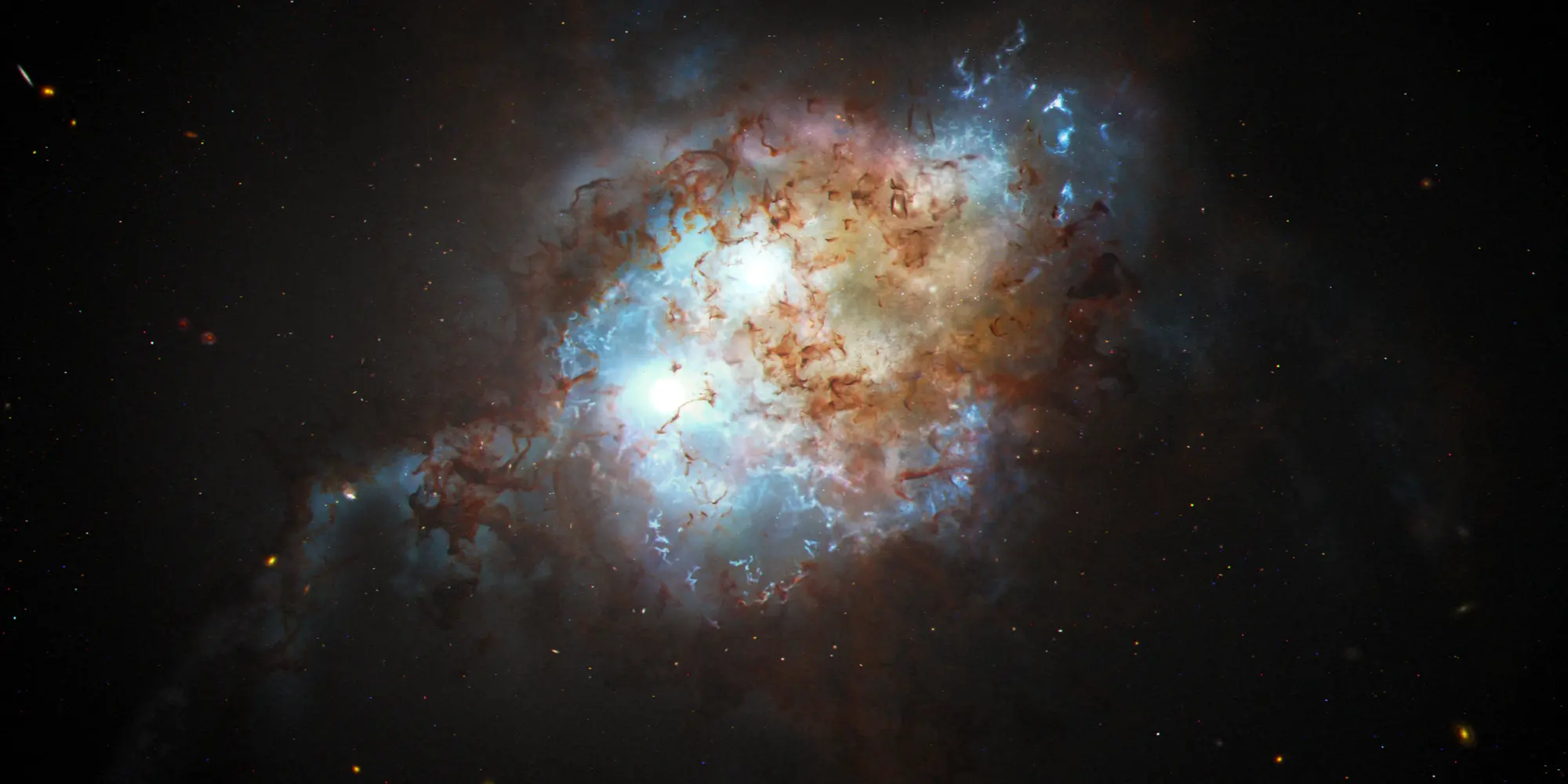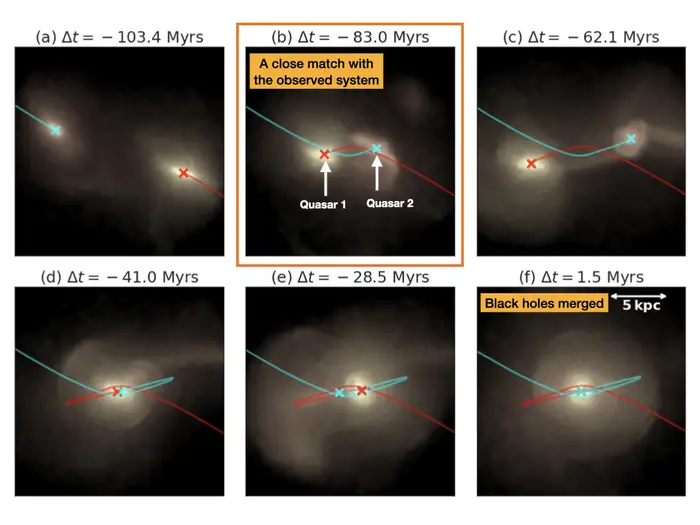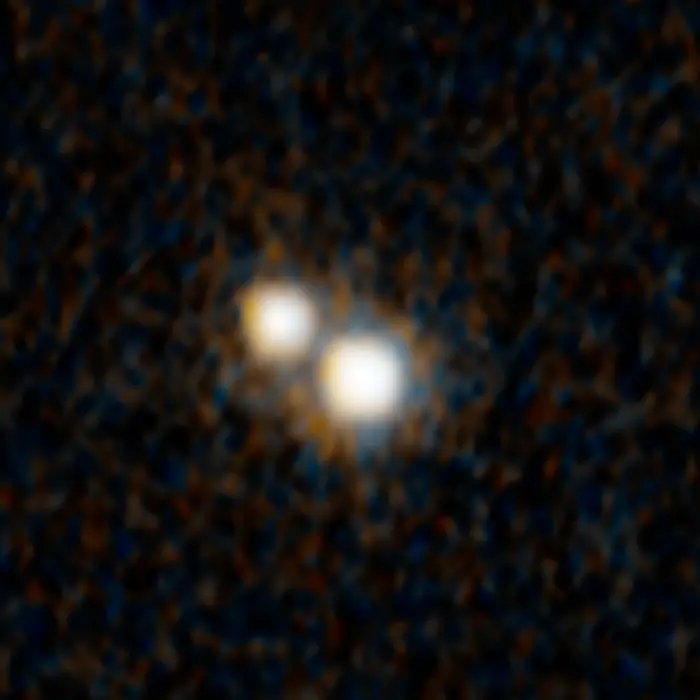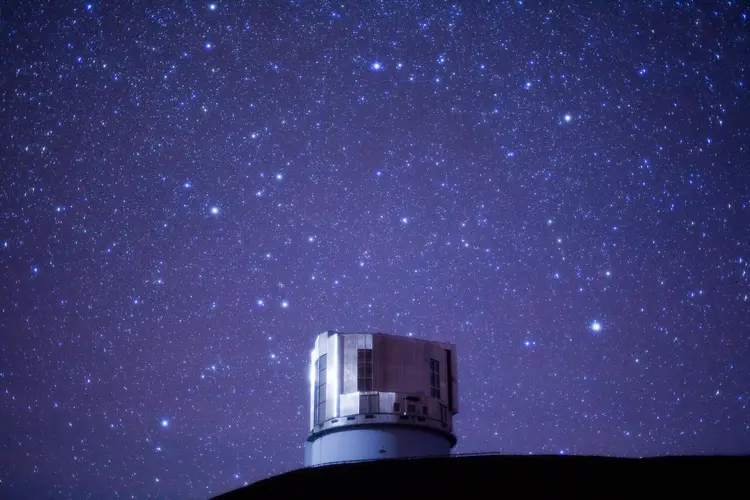
Hubble Finds Double Quasar in Early Universe
Simulations from Carnegie Mellon help researchers to understand the unexpected observation
Media Inquiries
NASA’s Hubble Space Telescope made an unexpected discovery — a pair of gravitationally bound quasars inside of two merging galaxies that existed when the universe was just 3 billion years old. An international group of researchers, including cosmologists from Carnegie Mellon University reported the discovery in the April 5 issue of Nature(opens in new window).
Quasars are among the brightest objects in the universe and are created by invisible supermassive black holes, which live at the center of large galaxies. As black holes feed, they emit energy that heats up and illuminates the dust and gas that they consume.
Researchers just recently have been able to see quasars in the early universe due to the power of the current generation of telescopes like Hubble. Double quasars have rarely been observed but are thought to be a telltale sign of a galaxy merger.
“Understanding how black holes form, the first quasars emerge and how they grow along our cosmic histories is one of the greatest theoretical and observational challenges of modern astrophysics,” said Tiziana Di Matteo(opens in new window), professor of physics and director of Carnegie Mellon’s McWilliams Center for Cosmology(opens in new window).
“Quasars are small in size but play a fundamental role in how galaxies form and evolve into their present state. Observing early quasars, and in particular pairs of them, helps us understand how cosmic structures first form in our universe and the basic processes by which black holes grow.”
The quasar pair observed by Hubble comes from a time period known as “cosmic noon,” which is believed to be the peak of star formation and black hole growth. While astronomers believe that galaxies and black holes merged frequently during this time, they have only observed a few double quasars.
“If we observe more double quasars, we can begin to put limits on theories about early black hole growth and galaxy assembly,” Di Matteo said.
Cosmological simulations are key to furthering this research. Di Matteo is a leader in the field. For the simulations, her team seeds a computer program with conditions about the early universe. As the simulation runs, researchers can witness possible scenarios about how the universe and given objects within the universe have evolved over time.
“Observations give us only a single snapshot in time. In this case we just see the double quasar at one point in its life and from one angle. And that picture is blurred by instrumentation and matter,” said Nianyi Chen, a doctoral student working with Di Matteo in Carnegie Mellon’s Department of Physics(opens in new window). “From a simulation we have access to much richer temporal and spatial information. In a way it’s like reconstructing a 3D movie from a single picture.”
The Hubble team used simulations created by a team led by Di Matteo to better understand what the telescope saw and what it could mean. The simulation began from when the universe was only about 10 million years old — a time before any galaxies had been born — and ran until the universe was about 4 billion years old — shortly after the time the double quasar was observed.
Their simulation revealed valuable information about the properties of the quasar pairs and the supermassive black holes and galaxy systems where they live.
“In our simulation, we can trace the double quasars through their entire lifetime and answer questions about how they were born, how they evolved and what their future looks like,” Chen said.
Chen noted that the simulation can be used to predict whether or not the merger of the double quasars will produce gravitational waves, which will be heard by future detectors like the Laser Interferometer Space Antenna. Pairing the two will provide even richer data about the double quasars and the merger of their galaxies.
In addition to Hubble and the simulation, the discovery of the double quasars relied on data from other observatories and projects including observations from the W.M. Keck Observatories, the International Gemini Observatory, NSF's Karl G. Jansky Very Large Array in New Mexico, NASA's Chandra X-ray Observatory and ESA (European Space Agency)'s Gaia space observatory.
This artist's concept shows the brilliant glare of two quasars residing in the cores of two galaxies that are in the chaotic process of merging. The gravitational tug-of-war between the two galaxies ignites a firestorm of star birth.
Quasars are brilliant beacons of intense light from the centers of distant galaxies. They are powered by supermassive black holes voraciously feeding on infalling matter. This feeding frenzy unleashes a torrent of radiation that can outshine the collective light of billions of stars in the host galaxy.
In a few tens of millions of years, the black holes and their galaxies will merge, and so will the quasar pair, forming an even more massive black hole. Image credit: NASA, ESA, Joseph Olmsted (STScI).
Telescopic View
A Hubble Space Telescope photograph of a pair of quasars that existed when the universe was just 3 billion years old. They are embedded inside a pair of colliding galaxies. The quasars are separated by less than the size of a single galaxy. Quasars are powered by voracious, supermassive black holes blasting out ferocious fountains of energy as they engorge themselves on gas, dust and anything else within their gravitational grasp. The black holes will eventually merge. Credit: NASA, ESA, Yu-Ching Chen (UIUC), Hsiang-Chih Hwang (IAS), Nadia Zakamska (JHU), Yue Shen (UIUC)




